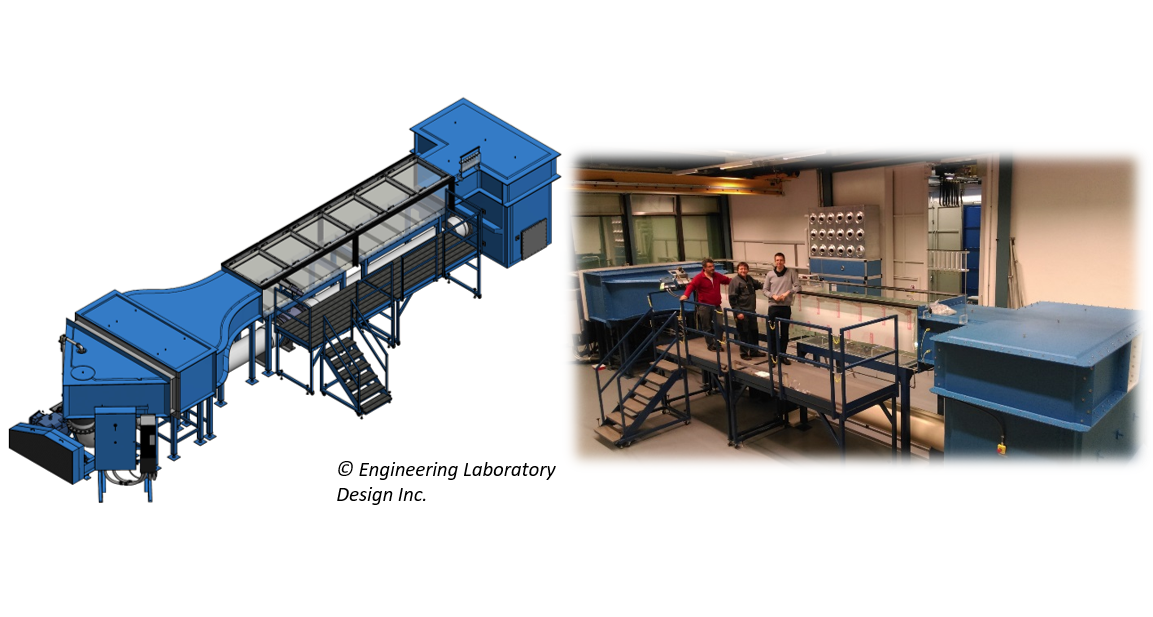Multiscale fluid-tunnel facility for the built environment

Type. SNSF R'Equip project
Funding. This PhD project is funded by the Swiss National Science Foundation (SNSF) and the ETHZ Scientific Equipment Program.
Duration. 3 years (2013-2016)
Contact. Thijs Defraeye (project leader).
The multiscale fluid-tunnel facility for the built environment consists of a large-scale atmospheric boundary layer (ABL) water tunnel (test section cross section = 0.6 x 1 m²) and a small refractive-index-matching (RIM) fluid tunnel (test section cross section = 0.1 x 0.1 m²) equipped with an exchangeable PIV-LIF system (particle image velocimetry & laser induced fluorescence, acquisition frequency up to 100 Hz). The latter will be used for non-intrusive, time-resolved imaging of the flow field as well as temperature and concentration fields in both tunnels.
The main applications of this facility are focused towards research related to urban energy and urban physics. The research plan includes a project on the influence of the urban microclimate and urban heat island effect on building energy consumption, urban wind and thermal comfort, urban ventilation and health (pollution) and mitigation thereof. Other projects are related to more specific urban physics problems such as the performance of porous asphalt and its influence on the urban microclimate, wind-driven rain in the built environment, and the cooling effect of vegetation in urban areas by evapotranspiration. The facility will also be used in other fields of research, amongst others to develop ICT-based urban planning decision making tools for the planning of more climate-friendly urban designs, to obtain accurate time-resolved flow and temperature data for the validation of novel computational fluid dynamics methods (e.g., Lattice Boltzmann method) and to analyze flow inside porous foam-based automotive catalysts.
This facility will complement the existing ABL wind tunnel facility of the Chair of Building Physics of ETHZ (located at Empa). Particular advantages of the fluid-tunnel facility are that: (1) the ABL water tunnel is more suitable to study buoyant and mixed convective flows in the urban environment at different scales, compared to the wind tunnel, due to the use of water as a fluid and the associated lower speeds; (2) temperature or concentration fields can be measured simultaneously with the velocity field by combined PIV-LIF, by which heat and concentration flows and exchange processes in the urban canopy can be quantified (again less feasible in a wind tunnel); (3) flow and temperatures inside porous materials can be measured by using refractive index matching of these materials with the working fluid (in the RIM fluid tunnel). The complementarity of both fluid tunnels and the ABL wind tunnel is a prerequisite for advancing beyond the state of the art for several on-going and future projects
Funding Agency:
